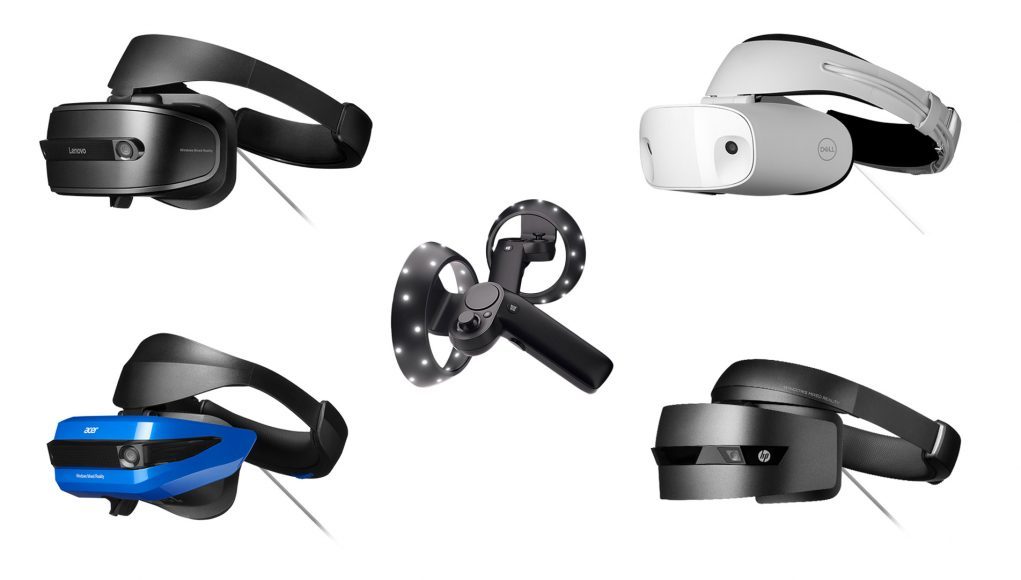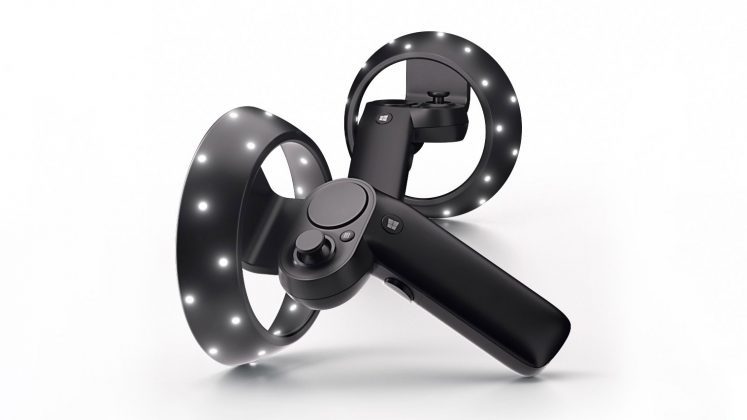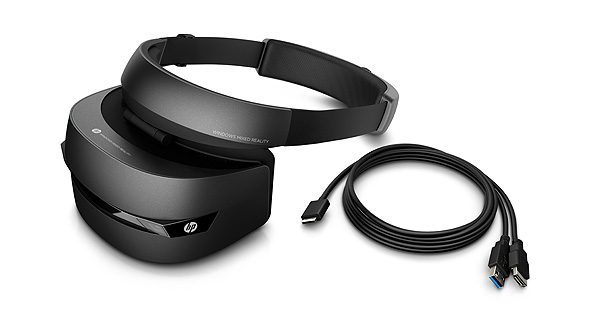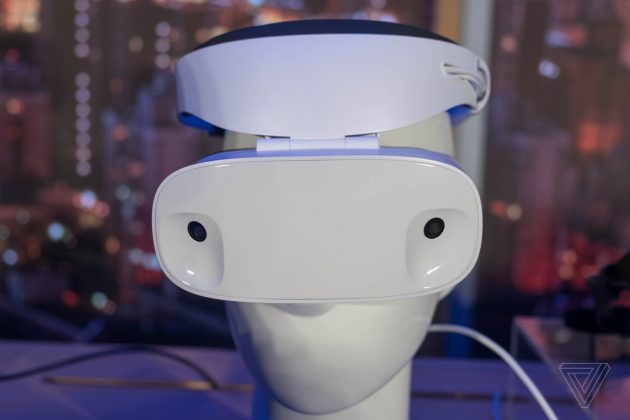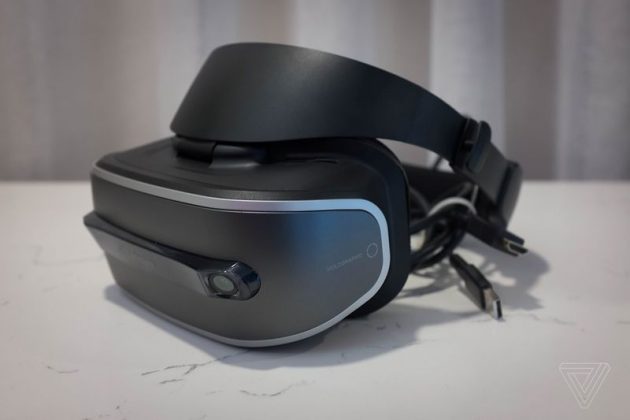Microsoft today announced that the company will be bundling its Windows VR headsets and motion controllers, and making them available for purchase this holiday season starting at $400. Revealed by Alex Kipman, HoloLens’ chief inventor and technical lead, a “variety” of headsets and motion controllers will be available by end of year from HP, Lenovo, Dell, and Acer.
The reference design, which all of these headsets are based on, feature inside-out tracking, meaning you won’t need external sensors like with Oculus Rift or HTC Vive for room-scale interactions. With the addition of motion controllers, which are optically-tracked by the headsets’ onboard cameras, Microsoft’s PC VR platform hypothetically has the same basic ability as the two previously mentioned headsets. Despite an initial focus of on media consumption over hard core gaming thanks to the headsets’ ability to run basic apps on computers using integrated graphics, the platform’s inclusion of motion controllers, the ability to play VR content from Steam, and a new subset of special ‘Mixed Reality Ultra PCs’ has changed the headsets’ potential usecase considerably.
“When it comes to deciding which hardware is right for you, we know that our customers value choice in brand, industrial design, and features,” said Kipman. “That is why we created Windows Mixed Reality as a platform for you to enjoy experiences across multiple devices that meet your mobility and performance needs.”
Notably, the Windows VR headsets all more or less come in around 350g in weight, which is about 200g lighter than the Vive and 100g lighter than Rift. In a hands-on with Acer’s developer edition, Road to VR contributor and community designer for Rec Room Shawn Whiting said he “didn’t notice any screen door effect and text looked very legible. The downside of the Acer’s visuals are its field of view and lens quality.” As for its inside-out tracking, Whiting says the headset was “quite solid in all of my demos. I did experience the occasional tiny jitter in the headset’s tracking, but nothing major.”
We recently got a hands-on with the Windows motion controllers, which Road to VR Executive Editor Ben Lang says still presents some outstanding reliability issues when it comes to tracking. Check out the hands-on here.
Since the Vive’s permanent price slash down to $600, and the Rift’s temporary cut to $400 (including Touch), new entrants into VR will have plenty of testing and demos to do to figure out which headset is right for them. We’ll be taking a deeper dive into specs in the coming weeks to give you a good idea of what headset to buy this holiday season, so check back then. In the meantime, check out our deep dive reviews on HTC Vive, Oculus Rift and Oculus Touch.
Microsoft’s proposed line-up also includes VR headsets from Asus and Chinese manufacturer 3Glasses, however the company makes no mention of the two in regards to holiday motion controller bundles.
Windows VR Headsets: Basic Specs
- Two high-resolution LCDs at 1440 x 1440
- 2.89” diagonal display size (x2)
- Front hinged display
- 95 degrees horizontal field of view
- Display refresh rate up to 90 Hz (native)
- Built-in audio out and microphone support through 3.5mm jack
- Single cable with HDMI 2.0 (display) and USB 3.0 (data) for connectivity
- Inside-out tracking
- 4.00m cable

